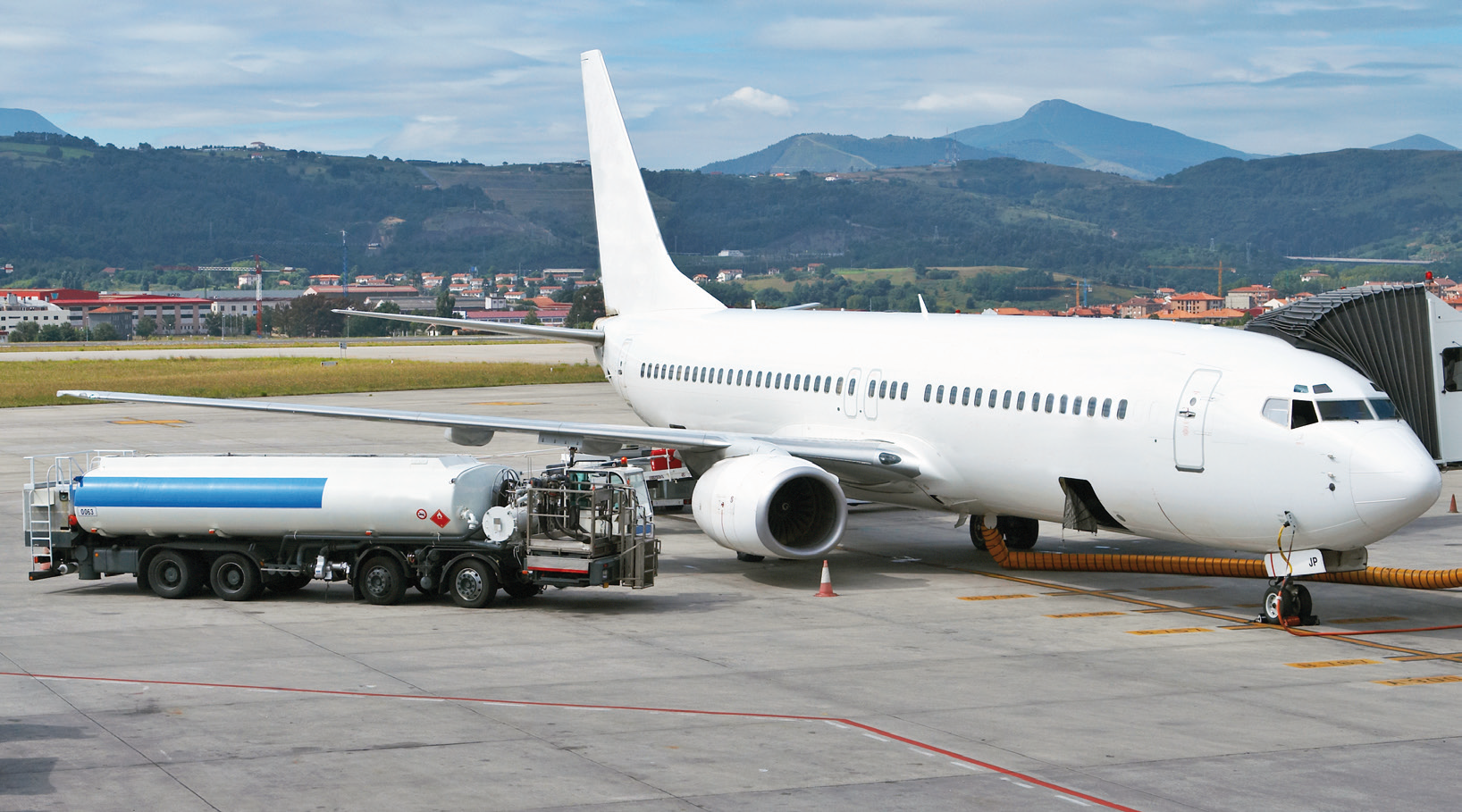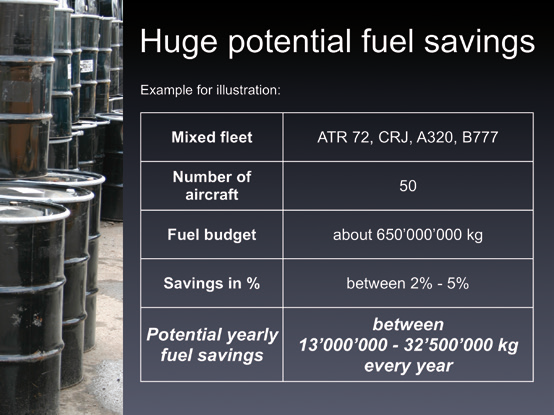Articles
| Name | Author | |
|---|---|---|
| Column: The world according to IT and me | Paul Saunders, Global Product Manager, Flatirons Solutions | View article |
| Fuel Efficiency and the cost of savings: introducing the new service SFCO2 | Capt. Max Moutoussamy, Head of Fuel Efficiency Services, Snecma (Safran) | View article |
| Software saves on fuel costs | Jurgen Hild, Managing Partner, Aviation Competence | View article |
| EFB as a BPI tool, not just a device | Philip J. Benedict, Customer Strategy Development, Closed Loop | View article |
Software saves on fuel costs
Author: Jurgen Hild, Managing Partner, Aviation Competence
SubscribeSoftware saves on fuel costs
Growing numbers of airlines use software to save fuel and report emissions – Jurgen Hild, Managing Partner of Aviation Competence explains why.

FUEL USAGE – THE NEED FOR CLARITY
There is one area in which even a typically cost-conscious airline will often have a deficit in understanding and that is with regard to their fuel bills and what contributes to them. By and large, airlines are good at negotiating good prices for the fuel they use and in employing sophisticated financial techniques such as hedging to better manage future costs. But when it comes to fuel consumption itself, all too often airlines accept this significant expense (30-40% of an airline’s costs – even more for cargo carriers) in their budgets without any question. They often have no idea that it could be better managed, leave alone improved upon. Behind this might be the fact that most airlines enjoy very little transparency with regard to their fuel consumption and some might ask whether that is a problem. Most people involved with the sector believe that it is because fuel costs are too significant to be accepted without question. Plus, it is not that complicated: transparency offers the key to really understanding whether the millions of kilos of fuel burned can be justified, whether there might be ways to cut fuel costs and, if so, how much could be saved.
 USING SOFTWARE TO SAVE FUEL
USING SOFTWARE TO SAVE FUEL
Lufthansa, Aer Lingus, KLM Cityhopper, Air Berlin and several other airlines use software from Switzerland based Aviaso to understand how their fuel is actually used and to highlight in which areas their fuel consumption can be reduced. The solution can also be used to report emissions and manage regulatory compliance with the EU Emissions Trading System EU-ETS.
THE BENEFITS OF GREATER TRANSPARENCY
According to IATA, based on an assessment of returns from over 100 airlines the conclusion was that average fuel savings of 5% are achievable for most airlines. Of course, many have already established programs to improve fuel efficiency which means that some of the obvious and easy-to-tackle initiatives are already part of the company’s processes. So they now need to drill further into the data to better understand their fuel usage and better see where more savings are possible. In order to take this next step, some airlines have already implemented one of the fuel saving solutions available from various software houses. For example, fuel savings between 2% to 5% or higher have been realized by airlines using the Aviaso software, even though most of these airlines had already implemented the easy-to-tackle initiatives.
COMPONENTS IN A SUCCESSFUL PROGRAM
In short, there are three components essential to any effective fuel efficiency improvement program: governance, knowledge, and software.
No fuel efficiency program is going to succeed or reach its full potential without the full support of and commitment from senior management. This first component can best be secured with the appointment of a full- or part-time (depending on the airline’s size) fuel efficiency manager. He or she, in turn, should have the support of a team drawn from across the airline in areas as diverse as flight operations, dispatch, ground operations, maintenance and commercial. Team members will pool the knowledge and experience gained in their respective areas towards fulfilling their responsibility to identify and implement fuel saving initiatives in those areas.
A well-founded understanding of fuel efficiency is the next component and airlines have available to them a great deal of the information needed for this. We always recommend customers to read the Guidance Material and Best Practices for Fuel and Environmental Management from IATA. Over and above that, for most aircraft types, aircraft manufacturers produce various information offering plenty of fuel saving ideas for their aircraft. And fuel efficiency training as well as consultancy can be procured from a number of organizations.

WHAT SOFTWARE DOES
Software capable of drawing on data systems within the airline from which to generate a transparent view of fuel consumption is the third component in the mix. The software should help identify where savings can be made and determine how big these potential savings are. It should also support monitoring to determine whether a fuel efficiency program is meeting its objectives and, specifically, measure whether savings that are achieved exceed, match or fall short of what was planned.
Good fuel efficiency software should be able to use data from the following data sources and airline IT systems:
- Flight schedule and operations system (OPS);
- Operational flight planning system (OFP);
- Flight data management/flight operations quality assurance system (FDM/FOQA);
- Load information/departure control system (DCS);
- Aircraft communications addressing & reporting system (ACARS);
- Fuel accounting system;
- Tech log and/or electronic flight bag systems (EFB);
- Navigational database systems for trajectory analyses; and
- Weather information systems, etc.
A number of software providers, including Aviaso, ETS Aviation, GE, and OSyS, offer fuel management packages, and airlines show great interest in such software. For example, Aviaso has nearly doubled its client base from 10 clients in 2013 to 18 clients today.
HOW SAVINGS CAN BE REALIZED
Any airline can achieve fuel savings as long as the right components are in place. All concerned parties must not only understand the determinants of current consumption but must also agree that savings can be achieved. Fuel saving and improved efficiency cannot be a departmental matter applying only to each ‘silo’ in the business: it must be a commitment across the organization but with each department understanding the part it has to play towards meeting the corporate goal. Over it all, there needs to be a good software package not only to ensure transparency of current usage but also to monitor progress of the fuel saving initiatives in place.
BENEFITS OF USING FUEL EFFICIENCY SOFTWARE
- Transparency in fuel consumption;
- Discovery of fuel savings potential of up to 5% or higher;
- Accurate monitoring of fuel savings initiatives;
- Communication of information to various stakeholders; and
- Proactive management of flights.
AVIASO/FUEL EFFICIENCY SOFTWARE
- Started software development: 2009;
- Airlines using software: 18;
- Number of aircraft monitored: over 1100;
- Ready-made data import adapters for all major airline IT systems and automatic data quality checks;
- More than 100 predefined analyses and initiatives and flexible user-defined analyses;
- EU-ETS compliant emissions reporting; and
- Availability of fuel efficiency consulting.
AIRLINES USING AVIASO FUEL EFFICIENCY SOFTWARE
Aer Lingus, Air Berlin, Air Transat, Belair Airlines, Cargolux, CityJet, Condor, Europe Airpost, Germanwings, KLM Cityhopper, LOT Polish Airlines, Lufthansa, Lufthansa Cargo, Monarch Airlines, NIKI Airlines, Thomas Cook Airlines Belgium, Thomas Cook Airlines UK
Contributor’s details:
 Jurgen Hild, Managing Partner, Aviation Competence
Jurgen Hild, Managing Partner, Aviation Competence
Jurgen Hild’s aviation career spans 35 years. He has held numerous management positions in the head office and abroad at Deutsche Lufthansa AG as well as at Condor Flugdienst GmbH. During this time he has acquired extensive knowledge and practical experience in the whole aviation industry and has managed several airline fuel saving projects.
In 2010 he started his own consultancy Aviation Competence. Mr. Hild holds a pilot license and an MBA from the University of Chicago.
Aviation Competence
Aviation Competence (www.aviationcompetence.com) is a team of experts having decades of hands-on experience in top management positions with regional, low cost, legacy and cargo airlines. With their deep understanding of the airlines’ needs they have successfully supported many airlines throughout the world.
Aviation Competence is committed to delivering solutions for airlines by mastering change through interim management assignments or by holistically supporting its customers during the complete project implementation processes.
Comments (0)
There are currently no comments about this article.

To post a comment, please login or subscribe.